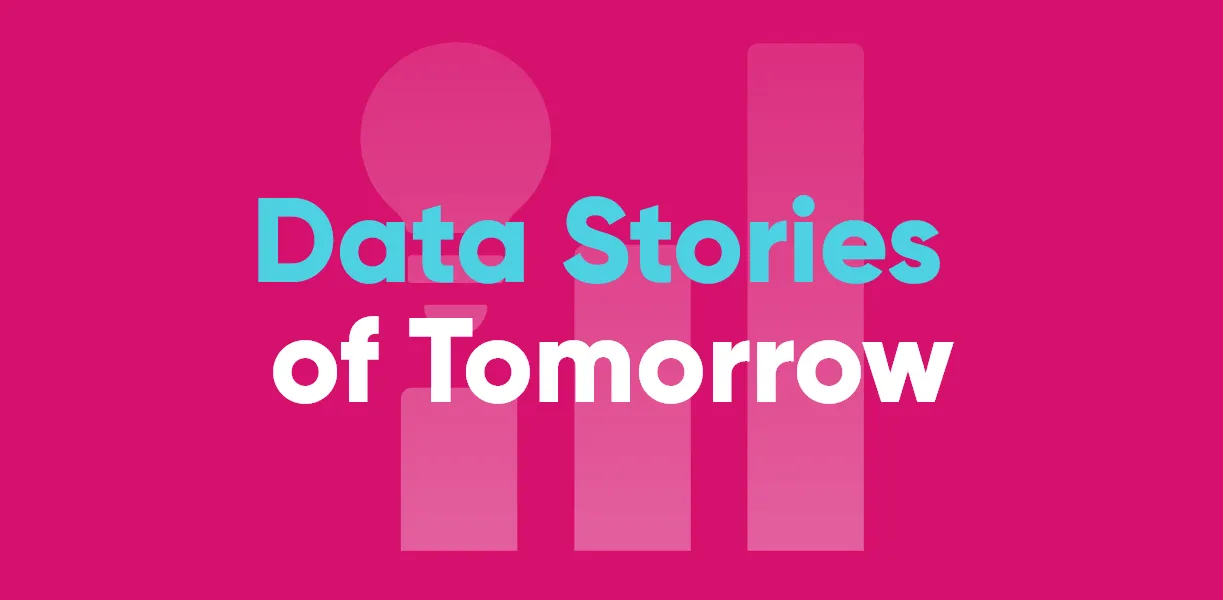In our last blog, we talked with our VP of Product Strategy and CPTO Martin Zahumensky about how Data Stories became one of the Ataccama platform’s newest modules. Now, we’re taking a look at how Data Stories fits into our current suite, and what the team behind the data storytelling program anticipates for the future.
Data Stories from the Spaceport’s perspective
Who are the people behind the data visualization and storytelling platform? At the head of the Data Stories team is Spaceport leader Michal Baumgartner, who joined Ataccama in early 2021.
“If you look at all the TED talks that have been given in the past, something like 70% of them are in a story type of narrative. And it has been proven that we as people remember things better when they’re in the form of a story.”
Michal describes Data Stories in different components: the story itself, which the reader sees; the sections that make up the story; and steps that can be within these sections. It can be thought of as similar to PowerPoint, where you can click the arrows and it’ll move you to the next slide, he explains.
“So we kind of look at it from two perspectives. One is the producer, maybe someone more technical who does deeper analysis and reporting. And then there’s the consumers, or the readers, who are probably more business oriented and want to get the information quickly.”
To illustrate how the entire platform cooperates end-to-end, he says you can think of it in layers, like an onion.
“The bottom level, for example, scans your data sources, and you document and profile them. And as you go up using DQ, MDM, and the other tools, you create clean data, organize datasets that everyone in your organization can find and use for, say, analytical purposes. And then Data Stories is sort of at the top layer of the onion, where you leverage all this great work from the other teams, be it internal Atacama teams that have developed it, or in the customer’s organization where they have already prepared the sources, cleansed the data, and so on. And now you can use them for business decisions.”

One question that the Data Stories team is often asked is how it differs from BI solutions like Tableau, Looker, or any other solution on the market. For Michal, the difference is clear.
“Those tools are pretty complex. First, you have to invest some money to buy the licenses, which of course you also have to do for Ataccama. But those tools are not business-friendly. You need a dedicated team of data engineers or data analysts who set up the data models or connect all the databases, tables, and so on. So the time to value once you acquire the tool is not great, since you have to spend a lot of time setting it up.”
Alternatively, Data Stories is connected with Ataccama ONE GEN2 with no additional setup required.
The driving force behind Data Stories is a young, ambitious team who isn’t afraid to tackle big projects and see the big picture of their work.
“They understand and use the product themselves to various degrees. So they’re not just developers who get a task and fulfill it without understanding the context. They always try to understand our goals and what we’re trying to achieve. And I think this goes for the rest of the company as well.”
Startup feel with a major impact
One major benefit of working in the Data Stories Spaceport is that the team doesn’t only work amongst themselves. Michal says they collaborate across teams within product and engineering, and the broader company.
“This goes back to being like a startup, where you sort of do a lot of roles, or you can do things that are not part of your official job description, but they might be interesting to you. Maybe you’re into creating content or giving talks to internal stakeholders, or training others. Our team gets to see and speak to people from all across the company.”
Though Michal and much of the team is based in Bratislava, they’ve established a hybrid-first system of working.
“We tend to gather in person once a month or every two months. We work in a hybrid setup–you can go to the office or from home, and if you need to start working on a feature or brainstorm with the team you can go to the Bratislava or Prague office to collaborate.”

Within Ataccama, the Data Stories Spaceport does things a bit differently from the others. For one, Data Stories’ back end is written in Python, not Java like Ataccama’s other modules. The pace at which the team can see the results of their work is quicker, too.
“Since Data Stories also has a free-to-try version at Ataccama.com, we release on a much faster cadence, meaning that we can get the features to users more quickly.”
Users can try the free version without having to upgrade their entire platform, or even be an Ataccama client yet. Users can explore provided data sets and see how the stories may be generated using AI, or provide their own additional context.
“If your data sources get updated, the story will be updated, which is super useful for business users. They were used to getting snapshots of the data — someone made the presentation, created screenshots, and pasted them into the presentation. But if they wanted to see, for example, how the new data changed something, they would have to request the analysis again.”
The next chapter of the story
As you can imagine, a team with this kind of momentum isn’t planning to slow down any time soon. While the team grows in terms of size and number, they’re looking forward to unveiling new features to their users.
“We’re going to be able to query the catalog items that you have within your data catalog. But as of now, we can connect to data quality monitoring projects outputs. And then for some ad hoc or quick analysis, you can also upload your Excel sheet or CSV file from your local computer and create a story from there.”
Within the team, they aim to promote rapid prototyping. When someone initially starts some sort of data exploration, they may not know where to start. Data Stories aims to make this less of a struggle for the average user, while also staying at the forefront of emerging technologies.
“We want even those who don’t understand data much to be able to create some sort of analysis by, for example, dragging the columns around or clicking into some intuitive UI.”
The future of Data Stories is looking bright, and we’re all excited to see what’s coming up next. Keep an eye out for upcoming events, Data Stories updates, and more behind-the-scenes action.
Want to join the Data Stories team? See our open positions and reach out to us! Can’t wait to hear from you!

